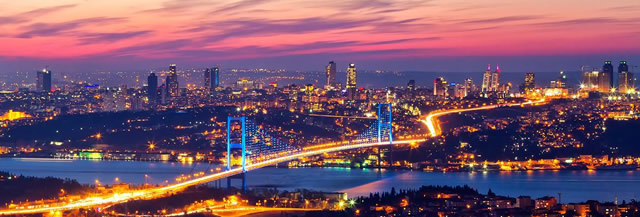
Istanbul, the enchanting city that straddles two continents, has long been a magnet for tourists seeking a blend of history, culture, and architectural marvels. In this article, we’ll embark on a journey through the archaeological sites that make the ancient city of Istanbul in Turkey a captivating destination for history enthusiasts and casual tourists alike.
Hagia Sophia: A Marvel of Byzantine Architecture
A masterpiece of Byzantine architecture, the Hagia Sophia stands as a testament to Istanbul’s rich history. Once a cathedral, later a mosque, later amuseum and now a mosque , it narrates tales of empires and civilizations.
Topkapi Palace: Unveiling Ottoman Grandeur
Topkapi Palace, the former imperial residence of Ottoman sultans, is a treasure trove of history and opulence. From the Harem to the Imperial Council chambers, each corner echoes tales of political intrigue and cultural splendor. Tourists can immerse themselves in the grandeur of Ottoman architecture and the vibrant history that shaped the city.
The Blue Mosque: A Jewel in Istanbul’s Skyline
Gracefully dominating Istanbul’s skyline, the Blue Mosque is a masterpiece of Ottoman architecture. Adorned with blue tiles that give it its name, this mosque is not just a place of worship but a cultural landmark. Visitors can experience the tranquility of the mosque and witness the interplay of light and color in its stunning interiors.
The Grand Bazaar: A Shopper’s Paradise with Historical Charm
For those seeking a different kind of historical immersion, the Grand Bazaar offers a unique blend of commerce and culture. Established centuries ago, it continues to attract tourists with its labyrinthine alleys, vibrant stalls, and a palpable sense of history. Bargaining for treasures amidst the echoes of the past is an experience unlike any other.
Underground Wonders: Basilica Cistern and Cappadocia
Beneath Istanbul’s bustling streets lie hidden marvels, such as the Basilica Cistern, an ancient underground water reservoir that transports visitors to another era. Additionally, Cappadocia, though not in the immediate vicinity, presents a unique underground city experience, adding a layer of mystery to Istanbul’s archaeological offerings.
Exploring Ephesus: A Journey Through Ancient Ruins
A short journey from Istanbul takes us to Ephesus, an ancient city that once stood as a beacon of Roman influence. The well-preserved ruins, including the Library of Celsus and the Theater, provide a vivid picture of life in antiquity. Exploring Ephesus is like stepping back in time, a journey every history enthusiast dreams of undertaking.
Suleymaniye Mosque: Ottoman Elegance in Architecture
The Suleymaniye Mosque, an architectural masterpiece commissioned by Suleiman the Magnificent, stands proudly on Istanbul’s skyline. Its elegant design and expansive courtyard offer visitors a tranquil space to appreciate Ottoman architecture and reflect on the city’s historical and cultural legacy.
Troy: Myth and Reality
Venturing beyond Istanbul, the ancient city of Troy beckons with the allure of myth and history. The legendary setting of the Trojan War, Troy’s archaeological site allows tourists to walk amidst the ruins and ponder the tales of gods and heroes. It’s a journey that bridges the gap between myth and reality.
Cultural Immersion: Istanbul Archaeological Museums
To delve deeper into Istanbul’s rich history, a visit to the Archaeological Museums is indispensable. With artifacts spanning various civilizations, these museums offer a comprehensive overview of the city’s diverse past. Tourists can marvel at the intricate details of ancient relics, gaining a profound understanding of Istanbul’s cultural tapestry.
Balat: A Quaint District with Historical Charms
For those seeking a more off-the-beaten-path experience, Balat unfolds as a quaint district with historical charms. Colorful houses, narrow streets, and a lingering sense of history make Balat a picturesque destination. Exploring its hidden corners reveals a side of Istanbul that often goes unnoticed.
Turkish Cuisine: A Culinary Journey Through History
Istanbul’s historical sites extend beyond architecture to its vibrant culinary scene. Turkish cuisine, a fusion of flavors influenced by centuries of history, offers tourists a gastronomic journey. From kebabs to baklava, each dish tells a story, adding another layer to the overall historical experience.
Bosphorus Cruise: A Historical Voyage
To appreciate the city from a different perspective, a Bosphorus Cruise is a must. Gliding along the water, tourists can marvel at historical landmarks lining the shores. The Dolmabahçe Palace, Rumeli Fortress, and Bosphorus Bridge narrate tales of conquests and cultural exchange, providing a unique historical voyage.
Sustainable Tourism: Preserving Istanbul’s Heritage
Amidst the awe-inspiring historical sites, the need for sustainable tourism becomes evident. Preserving Istanbul’s heritage is a collective responsibility. Initiatives promoting responsible tourism, coupled with awareness among visitors, play a crucial role in ensuring that these archaeological wonders endure for future generations.
Conclusion
In the heart of Istanbul, where continents meet and history unfolds, the archaeological sites offer more than just a glimpse into the past. They are portals to different eras, narrating tales of empires, cultural exchange, and human resilience. As tourists explore the ancient city, they not only witness history but become part of it, creating memories that transcend time.
FAQs
- Q: Can I visit all the mentioned archaeological sites in a single trip to Istanbul? A: While it’s possible, it’s advisable to plan strategically to fully enjoy each site without rushing.
- Q: Are there guided tours available for these archaeological sites? A: Yes, guided tours are widely available, providing insightful information about the historical significance of each site.
- Q: What is the best time of the year to visit Istanbul for a historical tour? A: Spring and fall offer mild weather, making them ideal seasons for exploring archaeological sites without extreme temperatures.
- Q: Are there any restrictions on photography within these historical sites? A: Most sites allow photography, but it’s essential to respect any posted guidelines and restrictions.
- Q: How can tourists contribute to the preservation of Istanbul’s archaeological heritage? A: Supporting sustainable tourism practices, respecting site regulations, and staying informed about conservation efforts are ways tourists can contribute to preservation.
